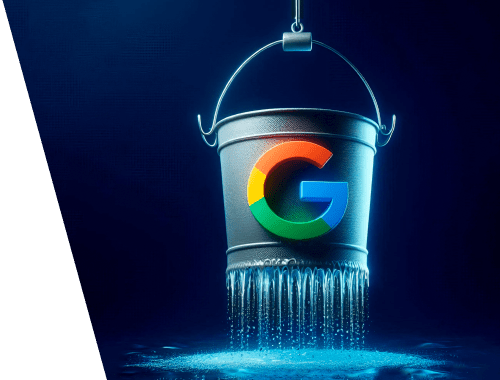1258
•
6-minute read


Google’s internal data leakage did make a big buzz in the SEO community. No wonder — the content of the leaked documents implies that Google may have been less than transparent about its operations for years.
On May 28, 2024, Google faced a massive leak of internal documentation. The leaked files provide an extraordinary glimpse into the inner workings of Google's Search algorithm, including the types of data Google collects and utilizes, the criteria for elevating certain sites on sensitive topics such as elections, and Google's approach to smaller websites.
The document has provoked a huge discussion about ranking factors — their number, their utilization, and why actually Google said that some of them are not counted at all.
The most impressive yet not unexpected thing is that some of the details within these documents do contradict public statements made by Google representatives.
For example, the Google Chrome case — Google representatives have consistently asserted that Chrome data is not used to rank pages. However, the leaked documents explicitly reference Chrome in sections discussing how websites are displayed in Search results:
Domain authority is another contradictory factor. Google spokesmen have been implying that Google does not have (and does not use) any domain authority indicator:
But… Guess what? They do.

Google’s John Mueller once said that there’s no sandbox for new websites:

But the document reveals that there’s a parameter called hostAge, which literally means that a new site will be muted in search until it gains trust and credibility for some time.
To all the owners of new websites — this is why your newborn domain will not rank in a month or two.
The list can be broadened by “clicks are not a ranking factor”, “PageRank is dead”, etc.
The truth is that way too many Google’s “there’s no smth…” appear to be lies.
It has always been clear that “backlinks and content” are not the only two pillars Google uses to rank sites. It has even been clear that there are 200+ ranking factors. But the number of 14,000 (just think about this!) has definitely become a surprise. An unpleasant one, as it will take long to look through all of them in detail and come up with more or less clear guidance for SEOs.
What has already become clear is that Google’s mantra that backlinks are not at the top of the ranking factors list is most probably a lie. Otherwise, there wouldn’t have been so many attributes about link quality. For example:
As Google collects clicks and applies them in ranking, it is clear that the rest of user behavior signals will play a big role here as well.
For example, dwell time and impressions do provide user behavior information, so these signals are used in ranking. So, pay more attention to your GSC impressions graph.
And it’s not only about topical authority online. Your offline brand reputation and other mentions of trust all benefit your positions in Google.
The same is true for proven authorship expertise and buzz around your personality — the more famous you are, the better you can add to your site’s search positions.
One more peculiarity about personalities — Google labels small personal websites or blogs to sort them somehow. And it’s unclear what for, and what they’re going to do with this information.
Sure thing, it’s impossible to cover all the 14k leaked factors in two days. And, to be honest, most of them will still be too technical to understand even later. But we are working hard to welcome you with an elaborated cheat sheet of new ranking factors — you will definitely find most of your answers there. So, stay tuned.
P.S. Let’s hope Google will not roll out some urgent update to make all the leaked data timed out.





